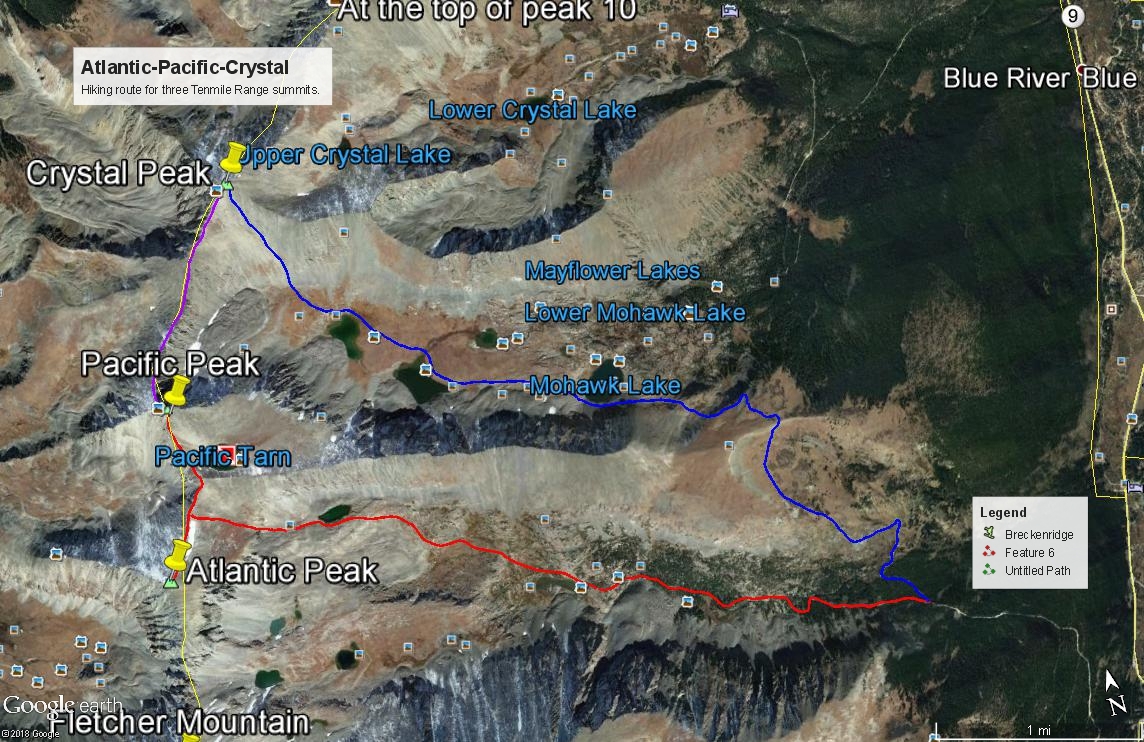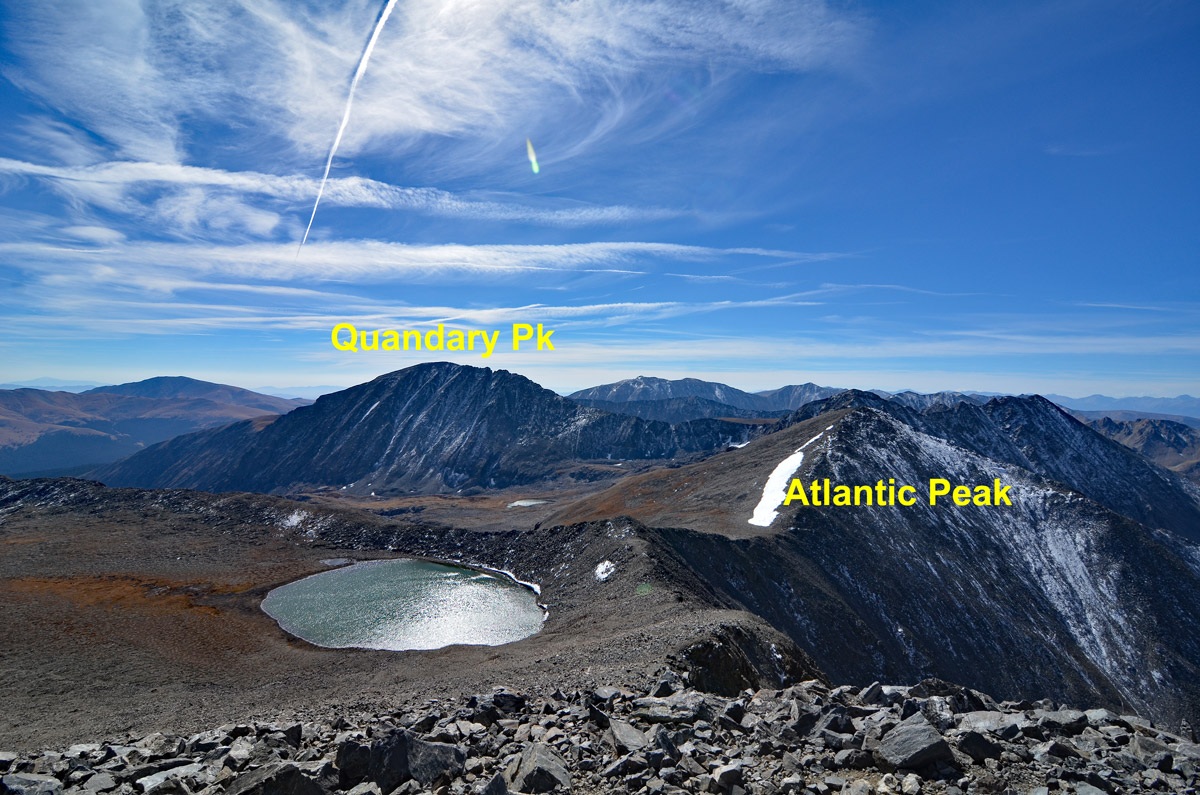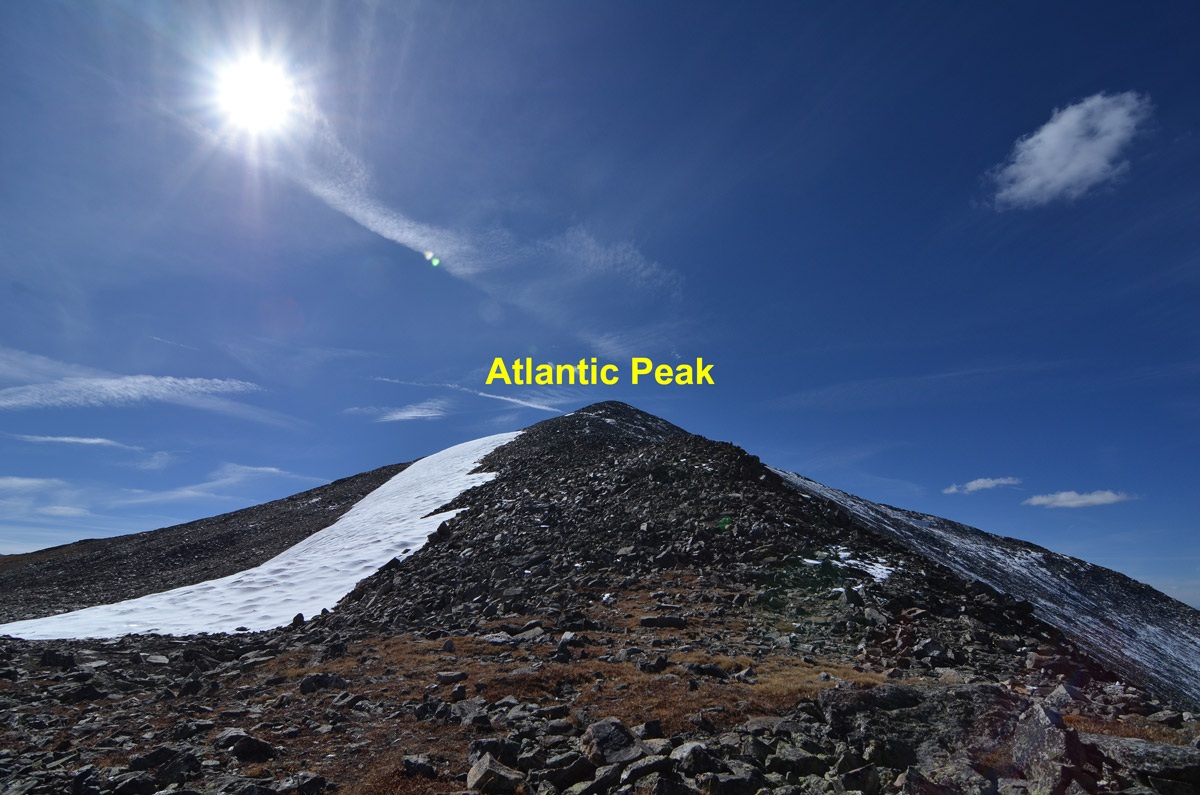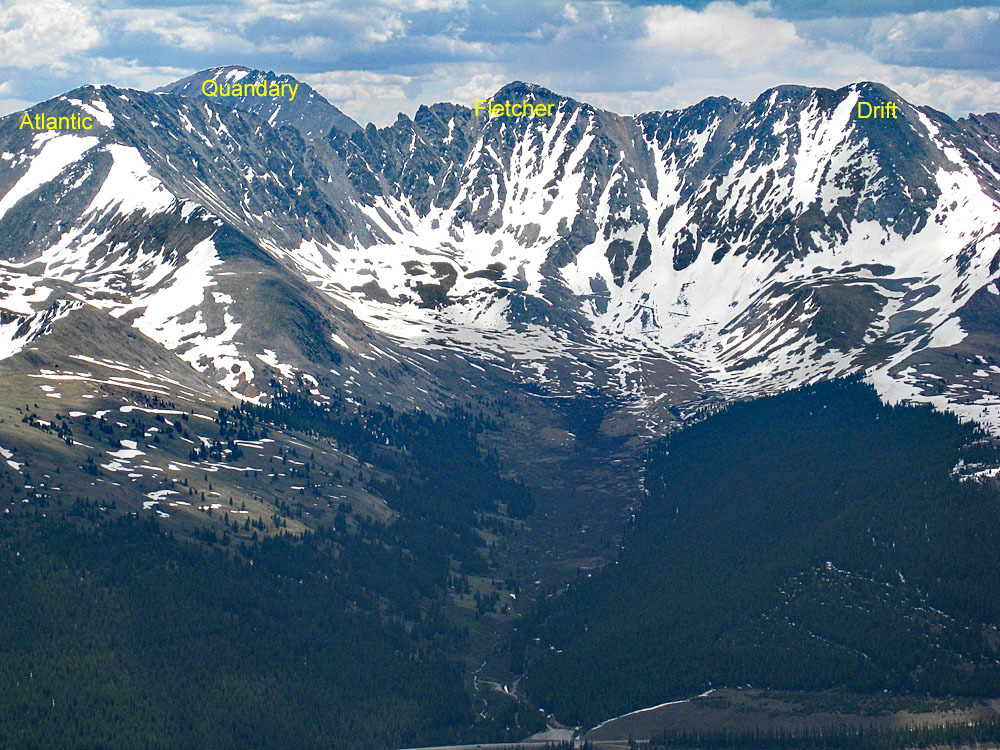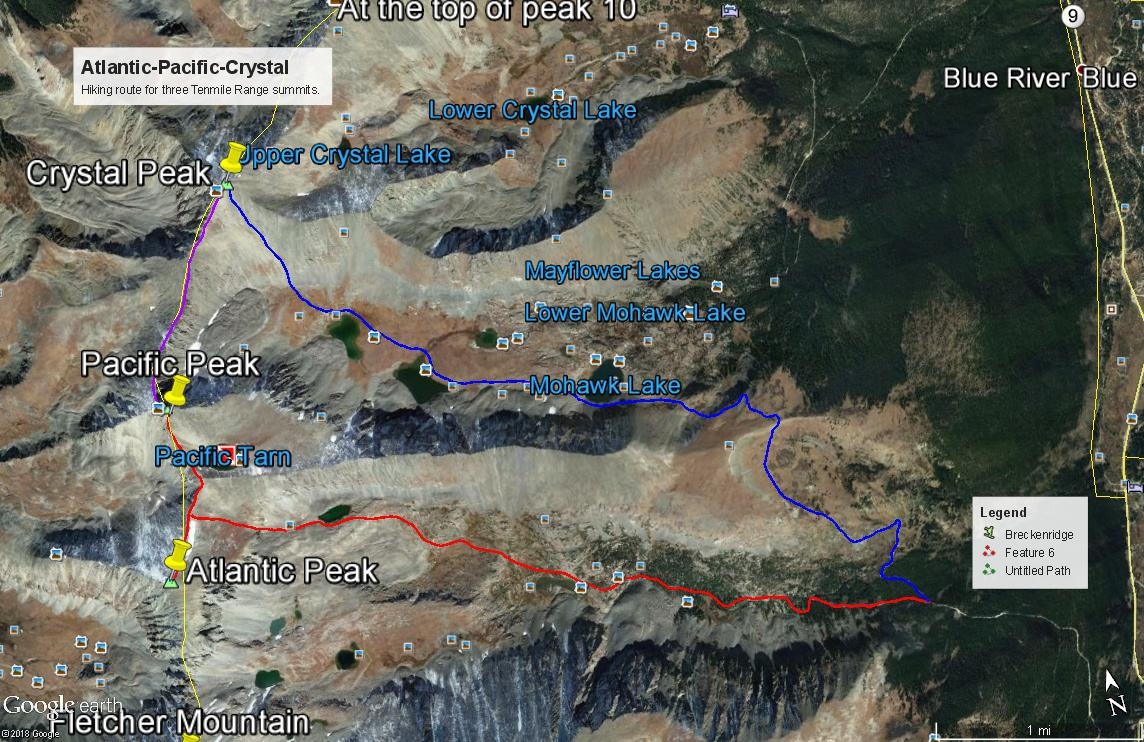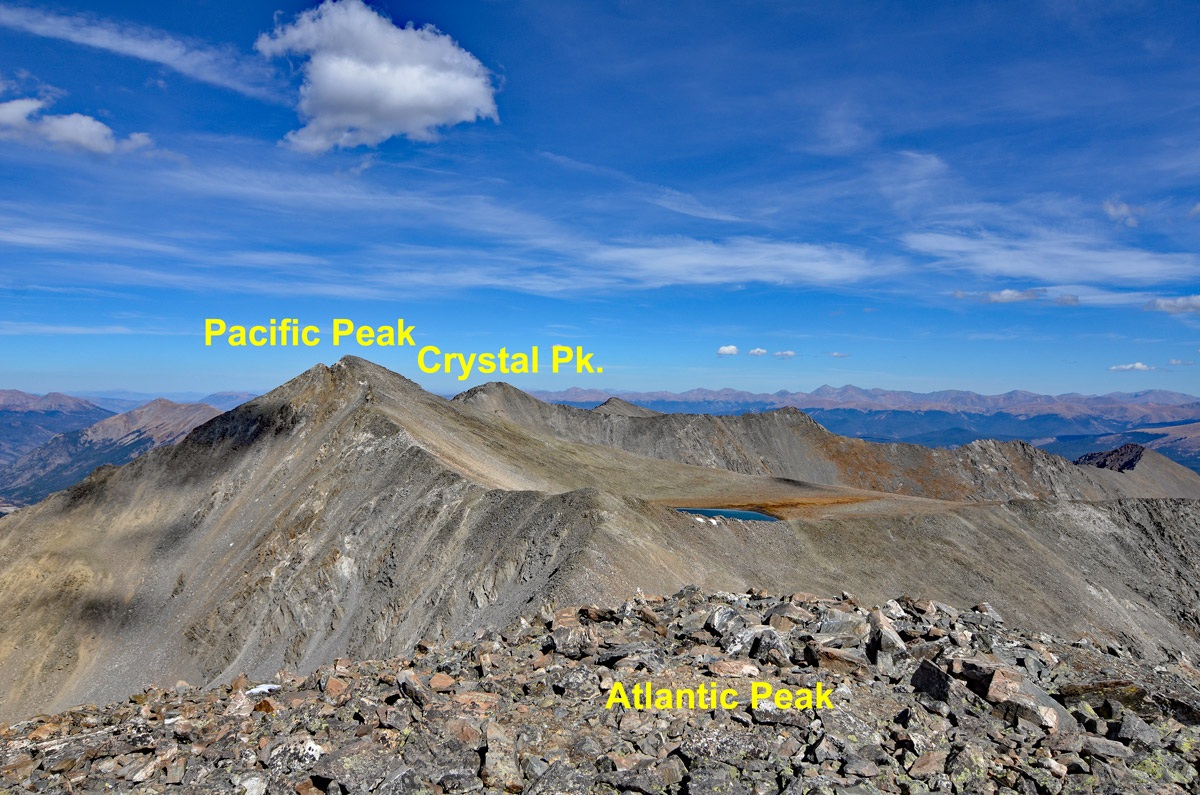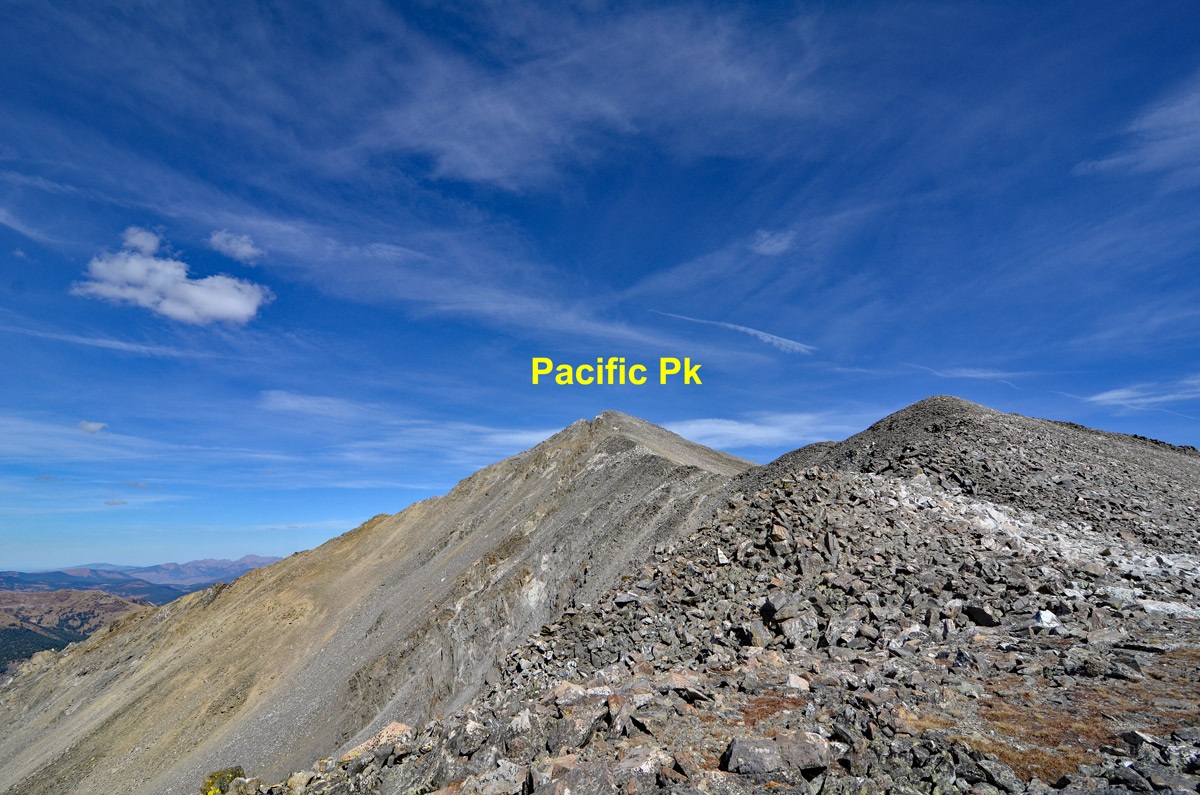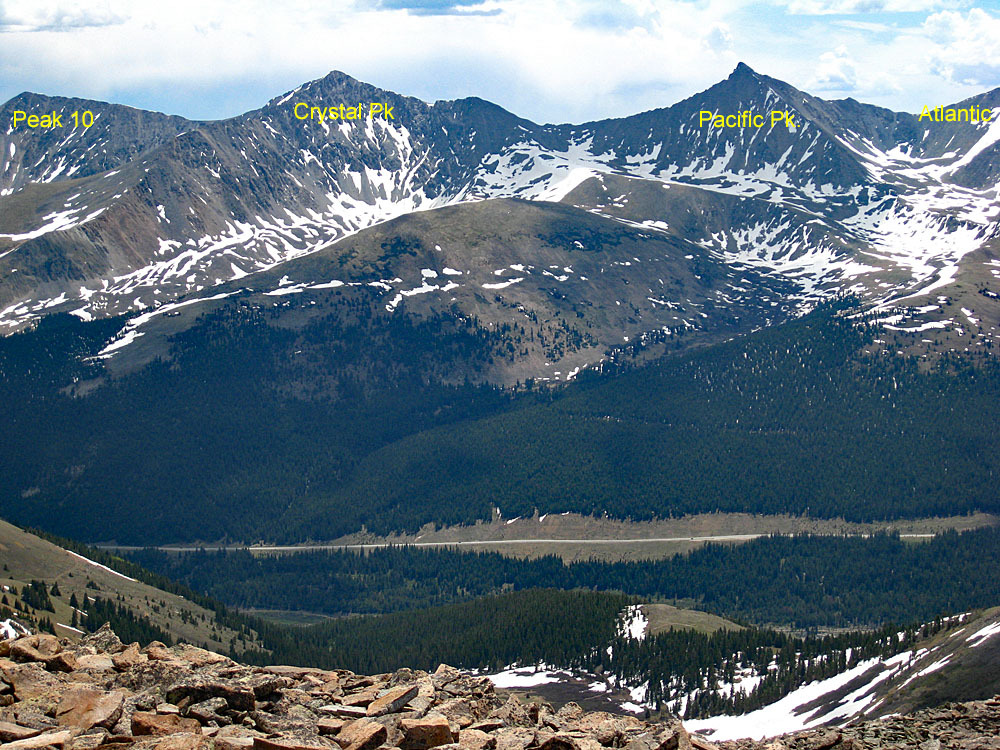Please Note: The McCullough Gulch TH access is now regulated and a parking permit is required, or a shuttle must be taken from the airpost north of Breckenridge to the trailhead, as of July 30, 2021. See the trailhead description for more information.
Atlantic Peak is sequenced with Pacific and Crystal. In this presentation, Atlantic serves as the first summit of a three-peak day that includes three, Top 100 summits, an uncommon combination for those attempting to climb the 100 highest. This circuit hike will take you across a wide variety of terrains. In earlier season, an ice axe can be handy. The Round-trip mileage shown for Atlantic is if you climbed Atlantic only and returned back down McCullough Gulch. Mileage and elevation gain are measured from the intersection mentioned in the trailhead description where we advise to park.
From where CR 851 forks at our suggested parking location for this circuit, walk on up the left fork that heads NW, passing by a closed gate marking the end of vehicle progress. Continue on the old road. It will soon cross what Roach calls "Quandary Creek," (name not found on any map we have), on a very old bridge (hope it's still there), which in our estimation should perhaps be called McCullough Creek since it is found in McCullough Gulch. Once the road makes this crossing you can continue WNW on it for some distance until it switchbacks to the east. Depart the road and continue on a rocky trail, still on the north side of the creek. The trail then begins to gain elevation more steeply until it arrives at the east end of an unnamed, elongated lake at 11,920 ft. The old road/trail that leads up here is plotted out on the MapBuilder Topo version found on CalTopo. When you select our map on our website, you are taken by link to the CalTopo site so you have an interactive map to play with. On the right hand side, where it says "USGS 7.5" click on that and then you'll see something about "Base Layer." Select that and then of the various map versions available, select "MapBuilder Topo." This will show a well-plotted map against our roughly drawn red line.
From the elongated lake, a trail continues on the north side to the west. At the west end of the lake, there are two branches of the creek that come together. Head up the more northern of the two drainages. Do not turn off on a trial that heads left that accesses a basin below Fletcher and Quandary. The goal now is to reach another smaller lake in a basin at 11,695 ft. shown on the map that sits below a rugged east-west running ridge in a rocky bowl. The trip from the lower lake to this upper one can still be accomplished on mostly tundra with nice solid rock outcrops along the way and open, low trees. This area is both verdant and scenic with nice wildflowers, but once you arrive at the upper lake/bowl, expect to find mostly talus & rubble. Some of the rock can be avoided by climbing earlier in the season. If you do, you'll likely find an ice axe handy in order to ascend west from the upper lake to the saddle between Atlantic and Pacific. There's a cliff band west of the lake that you'll need to find a route through, but if you choose the right, short gully that breaks through, you can still keep things at Class 2. Once atop the cliffs, there's more tundra coverage for a while as you advance to the Atlantic-Pacific saddle. From the saddle, turn south and follow the ridge crest to the Atlantic summit. The remainder of the route is on talus/rubble, or you may find the remnants of a snow - cornice patch that follows the ridge that you can walk on. Just be careful if you find it corniced.
Perhaps the most impressive part of the view from the Atlantic summit is looking SE to the west ridge of Quandary that connects to Fletcher. It offers climbers a nice and challenging scrambling route to the Quandary summit. There are numerous sources to consult if you're enticed to try. For other route and approach ideas for Atlantic, Pacific or Crystal, see "Colorado's Thirteeners" by Gerry and Jennifer Roach.
 N 39° 25' 21.89", W 106° 07' 22.30"
(Not Field Checked)
N 39° 25' 21.89", W 106° 07' 22.30"
(Not Field Checked)
 Fletcher Mountain
Fletcher Mountain
 Crystal Peak
Crystal Peak
 Atlantic Peak [Formerly UN 13,841]
Atlantic Peak [Formerly UN 13,841]

